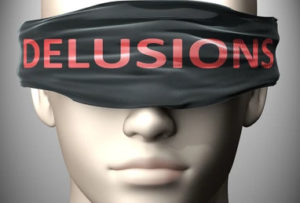An Angry Pink Cow
Name a food with a hole in it…
Did you say donuts, cheese, onion rings, bagels? Do you think your answer would match with everyone else’s? If so, you are in the herd; if not, you are the odd one out. Welcome to the game Herd Mentality. It’s a group game my family has enjoyed playing this past year. The aim of the game is simple: think like the herd and write down the answers you think everyone else will have. If your answer is part of the majority, you all win cows (points). If your answer is the odd one out, you get the angry Pink Cow, and your points are only good once someone else gets the Pink Cow. Excitement happens when everyone reveals their answer to the prompt. A chorus of laughter and unbelief sounds forth. Some people rationalize their answers, while others say, “I can’t believe you put that!” It’s a game that challenges our perception of what is obvious. It highlights how far off we can be in our assumptions of what other people think, what is expected, and what is considered “normal.” In his book Why We Are Wrong About Nearly Everything [1], Bobby Duffy addresses the reality of human misunderstanding and misperceptions. In this post, I will examine one key distinction and consider a couple of takeaways from his book.
Ignorance or Delusion
Since 2012, Ipsos has been exploring the gap between people’s perceptions and reality. On their website [2], you can find the full Perils of Perception survey results, which include data from 40 countries and 200,000 interviews. In his book, Duffy explains, “The focus of these studies is not primarily to root out ignorance so much as to discover delusions.”[3] Duffy contends that a necessary differentiation between delusion and ignorance needs to be understood. It is a delicate but essential line of distinction. Ignorance is the state of not knowing something. Delusion, however, is a state of misunderstanding reality. Thinking you believe is true, while it is false. This distinction sets the stage for the rest of the book. In a winsome and clever way, he invites the reader into an awareness of delusion that I found rather disarming.
I appreciate the invitation Duffy offers to be mindful of 5 things as you explore the delusions and reasons behind them throughout the book:
1. Many of us get a lot of basic social and political facts very wrong.
2. What we get wrong is as much about how we think as what we’re told—which means, as much as we’d like to, we can’t merely blame the media, social media, or politicians for our mistaken beliefs; we need to look at the whole system, including our own faulty thinking.
3. Our delusions are often biased in particular directions, because our emotional responses influence our perceptions of reality. Our delusions, therefore, provide valuable clues that we shouldn’t just laugh at or ignore.
4. More than this, our delusions can in turn shape social and political realities. They have serious consequences for so many aspects of our lives, from political outcomes, social cohesion, to our own health and finances.
5. Acknowledging the complexity and scale of the problem is our only real chance to deal with our delusions, individually and collectively. [4]
Inviting to be mindful of these 5 things is an invitation to humility. Admitting we are wrong is a key step in accepting the distinction between ignorance and delusion. It’s forgoing the pleasure of being right and facing the displeasure of being wrong. It confronts our feeling of being smart, competent, trustworthy, and in tune with our environment.[5] While admitting vulnerability, we have the strength and freedom of an undefended leader, as described by Simon Walker.[6]
Takeaways
If I had more space, I would enjoy unpacking a few other concepts Duffy introduces, like all the factors that shape the entire system of delusion and the theory of “Social Enumeracy,” or the way we filter the world through the “False Consensus Effect.” As it is, I have a couple of takeaways that Duffy offers in chapter eleven, “Dealing with our Delusion.”
Duffy demonstrates that there is no single cause for our delusions. They emerge from a complex system of forces, both internal and external. He suggests using a technique first introduced by Daniel Kahneman, “Slow Thinking.” [7] If we become aware of a biased or misunderstood perception, we can shift to slow thinking, seek to understand the source of the bias, and perhaps reconsider.
A second takeaway that accompanies the first is to accept the emotion but challenge the thought. As stated earlier, learning you are wrong can trigger several emotions. Ignoring the feelings won’t be productive when discovering a misunderstanding or wrong perception; understanding them will. Separating emotion from thought will allow for critical thinking and create a path toward creator awareness. Employing a more contemplative ”Slow Thinking” approach allows us to temper what might be a more emotional and immediate “Fast Thinking” response.
 When confronted with the reality that we can be delusional, we might feel like the odd one out, the “Angry Pink Cow,” but Duffy clarifies that our delusions are more in line with the herd than we might realize.
When confronted with the reality that we can be delusional, we might feel like the odd one out, the “Angry Pink Cow,” but Duffy clarifies that our delusions are more in line with the herd than we might realize.
_____________________________________________________________________________________________________________________
[1] Bobby Duffy, Why We Are Wrong About Nearly Everything: A Theory of Human Misunderstanding, (New York, NY: Basic Books, 2019).
[2] Accessed 03-20-2024, https://www.ipsos.com/en/perils.
[3] Bobby Duffy, Why We are Wrong About Nearly Everything,13.
[4] Bobby Duffy, Why We are Wrong About Nearly Everything, 23-24.
[5] Kathryn Schulz, Being Wrong,(New York, NY: Harper Collins, 4.
[6] Simon Walker, The Undefended Leader, (Piquant Editions, 2010).
[7] Daniel Kahneman, Thinking, Fast and Slow, (New York, NY: Farrar, Straus, and Giroux, 2013).
7 responses to “An Angry Pink Cow”
Leave a Reply
You must be logged in to post a comment.
Hi Chad, you should bring that game to DC in September!
What is a recent bias that you uncovered through slow thinking?
PS…I guessed donut.
Hi Chad, Thank you for your post, your family sounds like fun! I appreciate that you called out the humility inherent in recognizing one’s tendency to be wrong. How can a leader (say in a meeting) who realizes that an entire group is experiencing a delusion bring everyone around to truth?
Julie, thank you for the question. One way a leader could engage in the moment you described is by admitting their own delusion. That kind of humility can have a great influence on a group. Another way is to ask revealing questions.
Very catchy title Chad. Thank you for your post!
What does humility entail in the context of admitting when we are wrong, especially when faced with the distinction between ignorance and delusion?
Shela, If I understand your question correctly, humility in the context of admitting when we are wrong entails the death of pride. Willing to rightly understand our limitations.
Chad,
Thanks for your perception of this book and how your family has been using a game to help you all see your herd mentality. That’s amazing! How would answers like calamari, pineapple, and/or Swiss cheese add up?
I don’t know if I would do well at that game because of my worldview perception.
How has shifting into a slower gear, System 2 thinking helped you refocus your misconceptions? And, how do you imagine that will help you as you move forward with your NPO research?
Chad, I’ve never heard of this game, but it sounds very fun… and kind of scary too. Do you and your family talk about the perils of herd mentality, while still enjoying the game? Where do you catch yourself succumbing to herd mentality (or don’t you)?